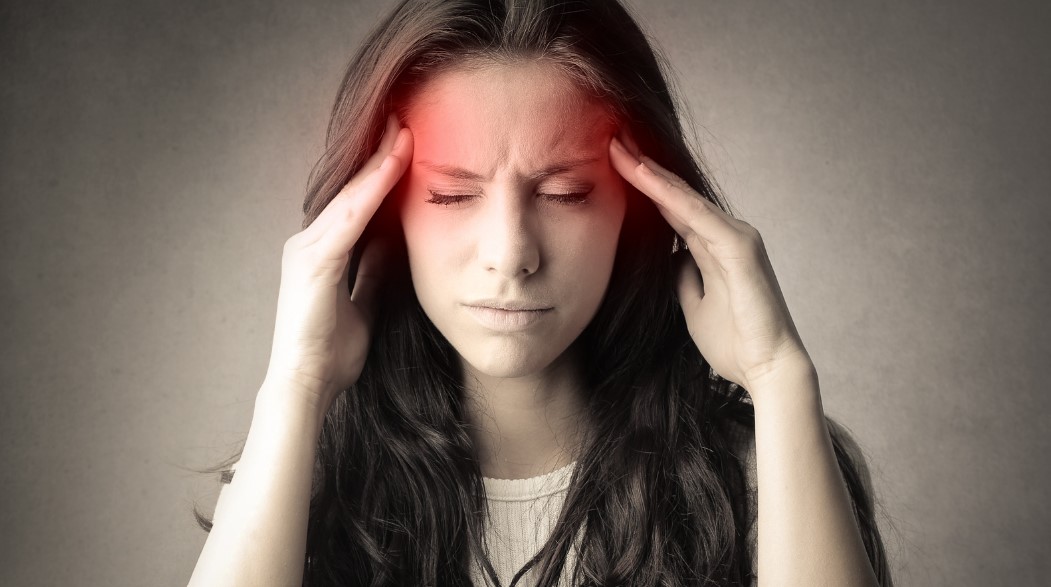Hey there! We’ve all experienced the throbbing pain, the pounding sensation that seems to have taken over our heads. Yes, we’re talking about headaches. These unwelcome visitors can damper our day, whether it’s a dull ache or a full-blown migraine.
But fear not! This blog post will dive into headaches and explore effective ways to bid them farewell. From understanding different types of headaches to learning self-care techniques and knowing when to seek medical help – we’ve got you covered!
So, if you’re tired of reaching for that bottle of painkillers every time your head starts pounding, read on because we’re about to unleash some headache-busting solutions that will leave you feeling refreshed and revitalized in no time. Let’s kick those pesky headaches out the door together!
Understanding Headaches

Headaches can be a real pain – quite literally! But before we dive into the remedies, it’s essential to understand what causes those pesky head pounders. There are different types of headaches, including tension-type headaches and migraines.
- Tension-type headaches
- Migraines
Tension-type Headaches
Tension-type headaches are one of the most common types of headaches that people experience. These headaches often feel like a tight band around your head, causing mild to moderate pain. They can be triggered by stress, anxiety, poor posture, or even dehydration.
To help relieve tension-type headaches at home, try some relaxation techniques like deep breathing exercises or meditation. Taking breaks from screens and practising good posture can also reduce the frequency of these headaches. Stay hydrated throughout the day and get enough sleep to keep those tension headaches at bay!
Migraines
Migraines can be a real headache, quite literally! These intense and often debilitating headaches can last for hours or even days. They’re not just your average head pain – they come with additional symptoms like nausea, sensitivity to light and sound, and sometimes even visual disturbances. It’s like having a party in your brain that you never wanted to attend!
If you suffer from migraines, you know the struggle is real. But fear not! There are ways to manage and reduce the frequency of these painful episodes. From identifying triggers like certain foods or stressors to practising relaxation techniques like deep breathing or yoga, some strategies can help ease migraine misery. So don’t let migraines bring you down – take charge and find relief!
How to Get Rid of a Headache?
Recognizing Emergency Symptoms

When it comes to headaches, most of the time, they can be managed at home with some simple remedies. However, there are certain instances where you should seek medical help immediately. Recognizing the signs of a headache that may require urgent attention is important.
If your headache is accompanied by sudden and severe pain, difficulty speaking or understanding speech, confusion or loss of consciousness, numbness or weakness in your limbs, changes in vision, seizures, or a stiff neck – these could be indications of a more serious underlying condition such as a stroke or meningitis. In such cases, it’s crucial to call emergency services right away.
Managing Headaches at Home
When you feel a headache coming on, it can be tempting to reach for the nearest painkiller. However, there are several self-care techniques that you can try at home before resorting to medication.
Applying a cold or warm compress to your forehead or neck is effective. This can help relax tense muscles and reduce pain. Another option is practising relaxation techniques such as deep breathing exercises or meditation. Taking breaks from activities that may be causing tension in your head and neck muscles can also provide much-needed relief.
Prevention plays a key role in managing headaches at home. Ensure you get enough sleep, as lack of sleep can trigger headaches. Maintaining a regular eating schedule and staying hydrated throughout the day is also important. Avoid skipping meals or consuming excessive amounts of caffeine, alcohol, or sugary drinks, as these can all contribute to headaches.
Self-care Techniques for Tension Headaches

If you’re someone who experiences tension headaches, you know just how debilitating they can be. The good news is that there are self-care techniques you can try at home to help alleviate the pain and find some relief.
One effective technique is applying a warm compress or taking a hot shower to relax tense muscles in your neck and shoulders. Also, relaxation exercises like deep breathing or meditation can help reduce stress and ease headache symptoms.
Prevention Tips for Tension Headaches
Simple lifestyle changes can make all the difference when preventing tension headaches. First and foremost, it’s important to manage your stress levels. Find healthy ways to unwind and relax, such as yoga or meditation. Regular breaks throughout the day and ensuring enough sleep can also help prevent tension headaches.
Another crucial aspect of headache prevention is maintaining good posture. Sit up straight while working or studying, and avoid slouching or hunching over for extended periods. Additionally, be mindful of your screen time – take frequent breaks from staring at screens and adjust your devices’ brightness and contrast settings to reduce eye strain.
Incorporating these preventive measures into your daily routine can significantly reduce the frequency and intensity of tension headaches.
Seeking Medical Help

When it comes to managing headaches, sometimes seeking medical help is necessary. If your headaches are severe, frequent, or interfering with your daily life, it’s important to consult a healthcare professional. They can evaluate your symptoms and provide appropriate treatment options tailored to your needs.
Don’t hesitate to reach out if you experience sudden and severe head pain accompanied by other alarming symptoms such as confusion, slurred speech, numbness or weakness in the limbs, or difficulty with vision or balance. These could be signs of a more serious underlying condition that requires immediate medical attention.
When to Call the Doctor?
If you’ve tried self-care techniques and your headache persists or worsens, it may be time to seek medical help. While most headaches can be managed at home, there are certain situations where contacting a doctor is necessary.
If you experience sudden and severe headaches that come out of nowhere, it could be a sign of a more serious condition. It’s important to get medical attention if confusion, slurred speech, numbness or weakness in the limbs, or vision changes accompany your headache. Additionally, if you’ve had a head injury or blow to the head and develop a headache afterwards, it’s crucial to consult with a healthcare professional.
Your doctor can assess your symptoms and provide appropriate treatment options tailored to you. They may recommend further tests or refer you to a specialist if needed.
Conclusion
Dealing with a headache can be frustrating and disruptive, but there are steps you can take to alleviate the pain and get back to feeling your best. By understanding the different types of headaches, such as tension-type headaches and migraines, you can better tailor your approach to finding relief.
When managing headaches at home, self-care techniques like applying a cold or warm compress, practising relaxation exercises, and maintaining a healthy lifestyle can make a significant difference.
However, it’s important to recognize when seeking medical help is necessary. If you experience severe or worsening symptoms or if your headache is accompanied by other concerning signs like confusion or difficulty speaking, it’s crucial to contact your doctor promptly.
Now go forth armed with this knowledge about how to get rid of a headache – here’s hoping for fewer disruptions from those unwelcome throbbing sensations!

